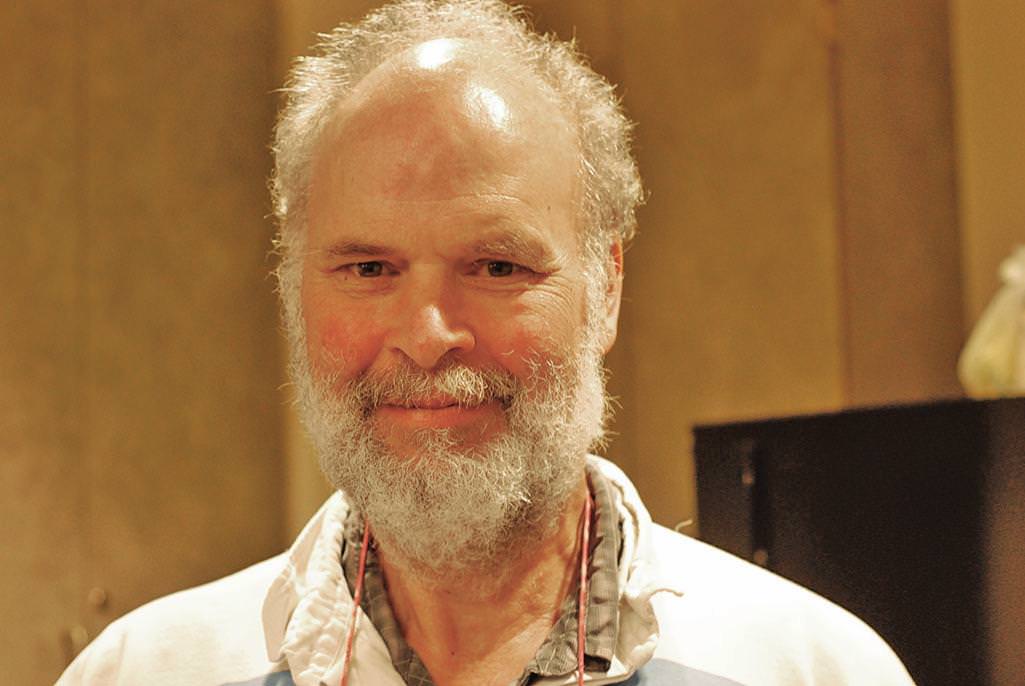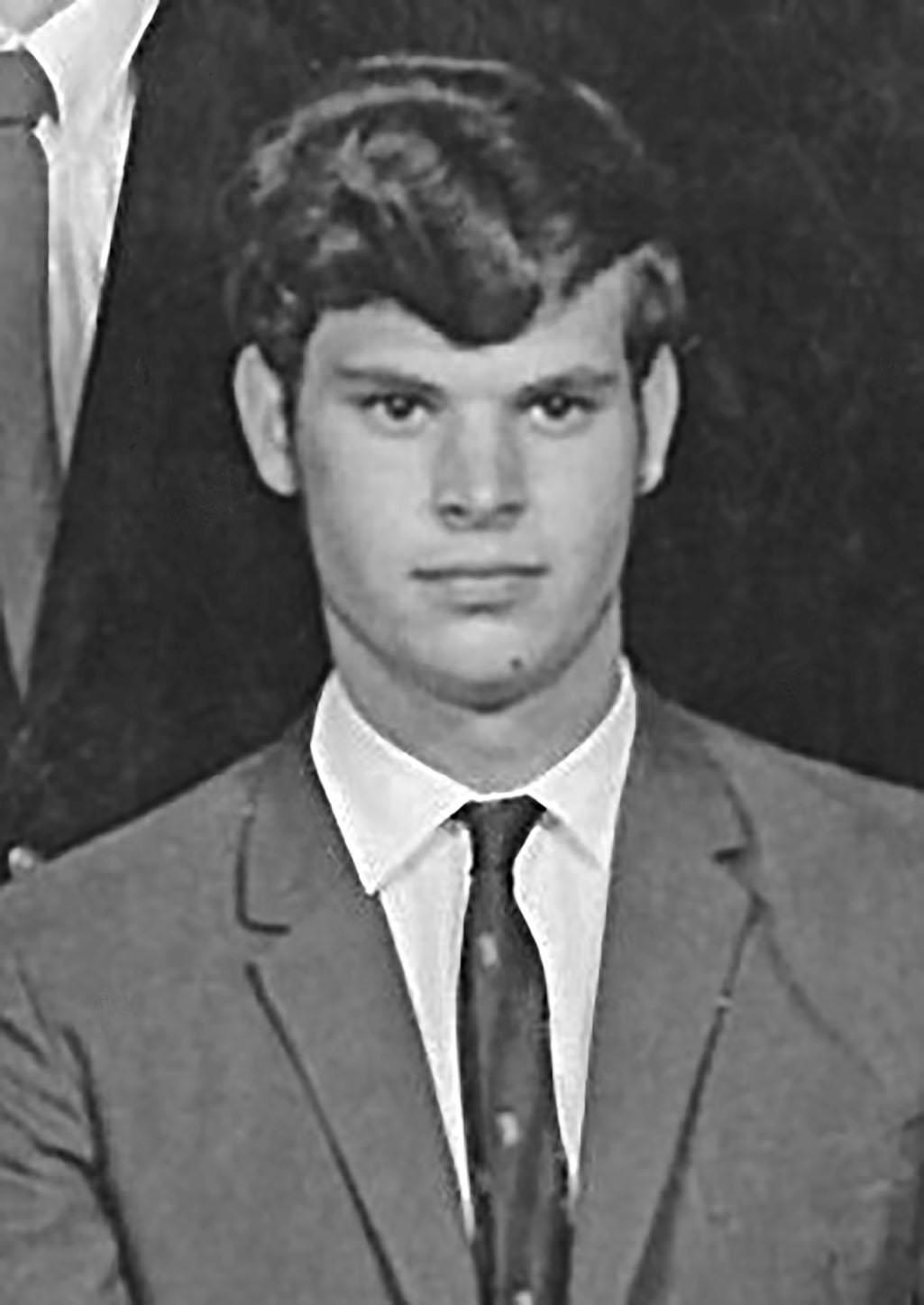by Dietmar Bisch, David E. Evans, Robion Kirby and Sorin Popa

Sir Vaughan Frederick Randal Jones, who died at age 67 on September 6, 2020, was one of the most influential and inspirational mathematicians of the last four decades. His original and penetrating analysis of inclusions of von Neumann algebras led to the creation of new fields of research, while reinvigorating old ones, thereby setting off an extraordinary interplay between disparate areas of mathematics, from analysis of operator algebras, to low-dimensional topology, statistical mechanics, quantum computing, and quantum field theory. Vaughan’s work had a major impact with unexpected, stunning applications, even outside of mathematics, for example to the study of knotted DNA strands and protein folding in biology. A crucial idea leading to these striking connections was his groundbreaking discovery in the early 1980s that the symmetries of a factor (a von Neumann algebra with trivial center), as encoded by its subfactors, are quantized. They generate “quantized groups,” a completely new type of structure, endowed with a dimension function given by a trace and an index that can be nonintegral.

This article gives a panoramic view of the scientific impact and enduring legacy of Vaughan’s work, as well as his personality and style of working through the contributions of colleagues and friends across mathematics and physics. Over the years, Vaughan’s countless mathematical interactions forged numerous lifelong friendships, and he will be sorely missed by all.
Vaughan was born on December 31, 1952, in Gisborne on the North Island of New Zealand to parents Jim Jones and Joan Jones (née Collins) and grew up in Auckland. Between the ages of eight and twelve he was educated at the boarding school St Peter’s School in Cambridge in rural North Island. Vaughan attended Auckland Grammar School until the age of sixteen and then studied Mathematics at Auckland University from 1969 to 1973. He left New Zealand in 1974 for graduate study at the University of Geneva with the intention of writing a thesis in Physics, but gradually moved in 1974–76 to work under the supervision of André Haefliger in Mathematics. It was in Switzerland where Vaughan met Martha (Wendy), who held a scholarship to study at the University of Fribourg and subsequently worked at the United Nations in Geneva. They married in 1979 and raised three children together, Bethany, Ian, and Alice.

Vaughan had several appointments in the USA until his death. However, the friendships he made during these formative years in New Zealand remained with him throughout his life. His love and loyalty to New Zealand would bring him back later, at least annually from 1994 on, to invigorate mathematics in his native land, often with summer schools, using his network of colleagues and friends worldwide and his scientific standing to attract other world-renowned stars to New Zealand.
In the fall of 1975, when Vaughan was switching from physics to mathematics, he met Alain Connes at a conference in Strasbourg and was very impressed. Connes had just finished his seminal work on \( \mathrm{II}_1 \) factors, a class of von Neumann factors that have a trace with range \( [0, 1] \) on the lattice of their projections. In one of his papers, Connes gave a classification of periodic automorphisms of the hyperfinite factor \( R \), an important \( \mathrm{II}_1 \) factor that can be seen as the quantized version of the unit interval. Vaughan was struck by the beauty of these mathematical objects and the continuous dimension phenomenon, which has the remarkable feature that one can take the \( t \times t \) matrix algebra \( M^t := \mathbb{M}_t (M) \) over a \( \mathrm{II}_1 \) factor \( M \) for any real number \( t > 0 \). He avidly studied all of the papers in this subject, from the pioneering 1936–1943 work of Murray and von Neumann, who discovered these objects, all the way to Connes’s recent preprints. He gathered a list of ten possible thesis topics and travelled to Paris to show them to Connes, who went rapidly down the list, “No, no, no, maybe, no, …, good, …,” and the “good” one became Vaughan’s thesis. That topic was to generalize Connes’s result on periodic automorphisms to arbitrary finite groups, which Vaughan did in [1]. Vaughan continued to visit Connes in Paris and then at the Institute for Advanced Study where Connes was a member in 1978–1979, with Haefliger as his formal advisor. Vaughan received his Docteur ès Sciences from the University of Geneva in 1979, and his thesis was awarded the Vacheron Constantin Prize.
Masamichi Takesaki was impressed by Vaughan’s thesis and brought him to UCLA on a Hedrick assistant professorship in 1980. But after one year at UCLA, Vaughan returned to the East Coast to join his wife Wendy who was studying at Princeton. UPenn seized the opportunity and made him an offer. So during 1981–1985, Vaughan was at UPenn, first as a junior faculty member then as an associate professor, with 1984–1985 actually spent at MSRI. In 1985, he was appointed full professor at UC, Berkeley, where he remained until he retired in 2013 with the title Professor Emeritus. From 2011 on he held the Stevenson Distinguished Chair at Vanderbilt University. Vaughan was also a Distinguished Alumni Professor at the University of Auckland and Founding Director of the New Zealand Mathematics Research Institute from 1994 on. He kept in contact with Europe including spending one-year sabbaticals at the IHES during 1986–1987 and 1989–1990 and at the University of Geneva in 1993–1994 and 1998–99.
In his thesis, Vaughan developed a novel algebraic approach to the classification of actions of finite groups on \( \mathrm{II}_1 \) factors, in which the action of the finite group was encoded by the isomorphism class of an inclusion of \( \mathrm{II}_1 \) factors, via a crossed product construction. Soon after his thesis, this led him to consider abstract inclusions of \( \mathrm{II}_1 \) factors, \( N \subset M \), or what he later called subfactors, together with a natural notion of dimension of \( M \) as an \( N \)-module, that he called the index and denoted \( [M : N] \). He noticed right away that the hyperfinite \( \mathrm{II}_1 \) factor \( R \) contains subfactors of any index \( \geq 4 \). This follows from the fact that \( R^t\approx R \) for any \( t > 0 \), a result that is due to Murray and von Neumann. He also noted that for subfactors \( N\subset M \) arising from inclusions of groups \( H\subset G \), the subfactor index was equal to the index \( [G : H] \) of the subgroup. By early 1980, he was able to prove that the index of a subfactor \( N \subset M \) can only take the values 1 and 2 when \( [M : N] < 1 + \sqrt{2} \). He circulated a preprint and gave talks at conferences about these findings. The general reaction of colleagues in the field was that most certainly only the values 1, 2, 3 could occur under 4.
But by November 1981, Vaughan made the amazing discovery that the index of a subfactor can take exactly the values \[ \{4 \cos^2 (\pi/n) \mid n \geq 3\}= \{1, 2, (3 + \sqrt{5})/2, 3, \dots \}, \] when less than 4. Most importantly, he showed that all these values can occur as indices of subfactors of the hyperfinite factor \( R \) ([2]). The proof of the restrictions on the index, which is of stunning beauty, involves the construction of an increasing sequence of factors (a tower), obtained by “adding” iteratively projections (i.e., idempotents) satisfying a set of axioms which, together with the existence of the trace and its properties, provide the restrictions.
In the summer of 1982, Vaughan realized that, because of the algebraic relations they satisfy, the projections in the tower of factors provide an unexpected family of semisimple quotients of the Hecke algebras of type \( A_n \) and completely new representations of Artin’s braid groups, indexed by a parameter \( \lambda \in \mathbb{R} \), which are unitary exactly at values corresponding to the indices in the discrete range. During the following two years, Vaughan gradually learned of the importance of braid groups to the theory of knots, due to Alexander’s theorem that any knot is a closed braid and Markov’s theorem showing when two braids give rise to the same knot via “two moves.” While he realized that one of the Markov moves was automatically invariant when applying the trace to the braid element in this representation in the tower of factors, it was in May 1984 that he dealt with the second Markov move, through a stroke of genius renormalization idea, that altogether gave rise to a polynomial invariant for knots and links — the Jones polynomial, \( V_K(q) \) for an oriented link \( K \) ([3], [4]). Once Vaughan had defined his polynomial, it was easy to see that it was not the classical Alexander polynomial, and that it could distinguish a knot from its mirror image, and then, with more work, that it solved three Tait Conjectures, century-old conjectures that concerned projections of a knot on the plane and their simplifications. Next, \( V_K \) was quickly generalized to a 2-variable polynomial, the HOMFLYPT polynomial, named after the initials of five groups who independently discovered it. Biologists immediately used the Jones polynomial to analyze knots appearing in strands of DNA.
The invariant \( V_K \) was remarkable in generating new directions for research. Most interesting for topologists was Khovanov homology, a categorification of \( V_K \) using the Kauffman bracket (itself a way of describing \( V_K \)). Khovanov homology, whose Euler characteristic is \( V_K \), determines the unknot which \( V_K \) is not known to do and is related by a spectral sequence to knot Floer homology.
In 1988, Witten gave a physical interpretation for \( V_K \) for links (Wilson loops) in terms of Chern–Simons theory at level \( l \) that corresponds not just to \( V_K \), but also to the HOMFLYPT polynomial. This point of view led to numerous 3-manifold quantum invariants at roots of unity using the colored \( V_K \). Vaughan originated these spectacular developments which now form a new branch of mathematics called Quantum Topology.
In a parallel development which started in 1983, a connection was made with calculations by Temperley and Lieb in solvable statistical mechanics. This triggered yet another series of interactions with physics, via statistical mechanics and conformal quantum field theory. In the latter, a similar dichotomy of discrete and continuous parts occurs for the central charge in the representations of the Virasoro algebra which describes certain projective representations of the diffeomorphism group of the circle. Subfactors provide a natural framework for studying two-dimensional conformal quantum field theories. Indeed the discrete series of the central charge in the representation theory of the Virasoro algebra can be understood via conformal nets of factors, as cosets of \( \operatorname{SU}(2) \) theories. However, the power of the quantum symmetry subfactor formulation is that it permits the wondrous possibility of constructing new exotic conformal field theories beyond the known well-studied ones arising from loop groups, doubles of finite groups, or natural constructions such as cosets, with intense ongoing work.
Perhaps the deepest and most enduring of Vaughan’s revolutionary work is within the theory of \( \mathrm{II}_1 \) factors and more generally in algebras of operators on Hilbert space. \( \mathrm{II}_1 \) factors arise naturally from groups, their actions on spaces, and unitary representations of groups. Until Vaughan’s work, symmetries of a \( \mathrm{II}_1 \) factor \( M \) were thought to be its algebra automorphisms, which under multiplication generate a group of automorphisms of \( M \), with possible torsion, like in the case of symmetries of classical spaces. But Vaughan’s work showed that symmetries of a factor \( M \) may be “quantized.” Moreover, it also showed that the proper way to view a symmetry in this framework is to encode it as a subfactor \( N \subset M \), or equivalently as the Hilbert \( N \)-\( M \) bimodule \( {}_N L^2 (M)_M \) and the Jones index \( [M : N] \) as the codimension of \( N \) in \( M \). Such quantized symmetries generate a quantized group (tensor category) \( \mathcal{G}_{N\subset M} \) under taking adjoints and multiplication (fusion under relative tensor product), called the standard invariant of \( N\subset M \), with a Cayley type bipartite graph \( \Gamma_{N\subset M} \). When the number of irreducible elements of \( \mathcal{G}_{N\subset M} \) is finite, something that Vaughan proved to be automatic if \( [M : N] < 4 \), then the square norm of the graph equals the index, \[ \|\Gamma_{N\subset M}\| 2 = [M : N]. \] The ADE classification of graphs of norm less than 2 as \[ \{2\cos(\pi/n) \mid n \geq 3\} \] offers yet another way of deriving the restrictions on the index \( < 4 \).
One can hardly overstate the importance and depth of these discoveries. This led right away to a huge number of beautiful and exciting problems, such as the classification of subfactor inclusions \( N \subset M \) when \( M \) is hyperfinite, the problem of axiomatizing the objects \( \mathcal{G}_{N\subset M} \) and characterizing the bipartite graphs \( \Gamma_{N\subset M} \) that can occur as graphs of subfactors, and the problem of investigating what kind of quantum symmetries can “act” on a specific factor and what values of the index can occur, etc.
Many outstanding results by a large number of people have followed. Vaughan was much involved in these developments, notably finding the best way to characterize the objects \( \mathcal{G}_{N\subset M} \) arising as standard invariants of subfactors as a two-dimensional diagrammatic structure of tangles called a planar algebra (1999). Vaughan developed planar algebras as a tool to efficiently carry out intricate computations with the standard invariant of a subfactor. It allowed for topological arguments in the analysis of subfactors and led to remarkable results in the classification programme of subfactors, including the construction of stunning “exotic” quantized symmetries, captured as planar algebras. These powerful tools were successfully used by Vaughan and some of his former students to classify all such symmetries up to index 5 (1995–2014) ([5]), which was then pushed further up to \( 5.25 \). While traditional classification attempts focused on subfactors with small indices, the planar algebra approach shifted the point of view to a generators and relations approach. Thus, singly generated planar algebras and then Yang–Baxter relation planar algebras played a key role, through which important colored variants of the Temperley–Lieb algebras were discovered as the fundamental quantized symmetries associated to intermediate subfactors.
Planar algebras, together with a quest to produce a conformal theory from subfactors, led Vaughan to a study of the Thompson groups as discrete approximations to the diffeomorphism group of the circle, and again to unexpected spin-offs for the theory of knots and links (2015–2020).
More details of all these mathematical developments will be found in a forthcoming issue of the Bulletin of the AMS which is dedicated to Vaughan.

Vaughan was awarded the Fields Medal in Kyoto in 1990, and was elected Fellow of the Royal Society in the same year, Honorary Fellow of the Royal Society of New Zealand Te Apārangi in 1991, member of the American Academy of Arts and Sciences in 1993 and of the US National Academy of Sciences in 1999, and foreign member of national learned academies in Australia, Denmark, Norway, and Wales. He received the Onsager Medal in 2000 from the Norwegian University of Science and Technology. In 2002, he was made a Distinguished Companion of the NZ Order of Merit DCNZM, later redesignated Knight Companion KNZM. The same year, he became an honorary member of the London Mathematical Society. The Jones Medal of the Royal Society of New Zealand Te Apārangi is named in his honor.
Vaughan had a strong commitment of service to the community. In 1994, he was the principal founder and Director of the New Zealand Mathematical Research Institute, leading summer schools and workshops in New Zealand each January. He was Vice President of the American Mathematical Society in 2004–2006, and Vice President of the International Mathematical Union in 2014–2018.
Vaughan had an unusual and very personal style of doing research. He would freely share ideas about a project and discuss initial speculations and possible applications and concrete steps for how one might obtain the final result. Vaughan was a warm and gregarious individual whose humor and humility led to the generosity and openness from which the mathematical community drew substantial benefit. Vaughan had over 30 graduate students and was a sought-after doctoral advisor. His presence at mathematical events was stimulating for all who came in contact with him. He will be dearly missed by his family and his many friends all over the world.
[Editor’s note: The text above is from the Introduction of “Memories of Vaughan Jones” published in the Notices in October 2021. For the full article, click on the PDF link at the upper right of this page.]